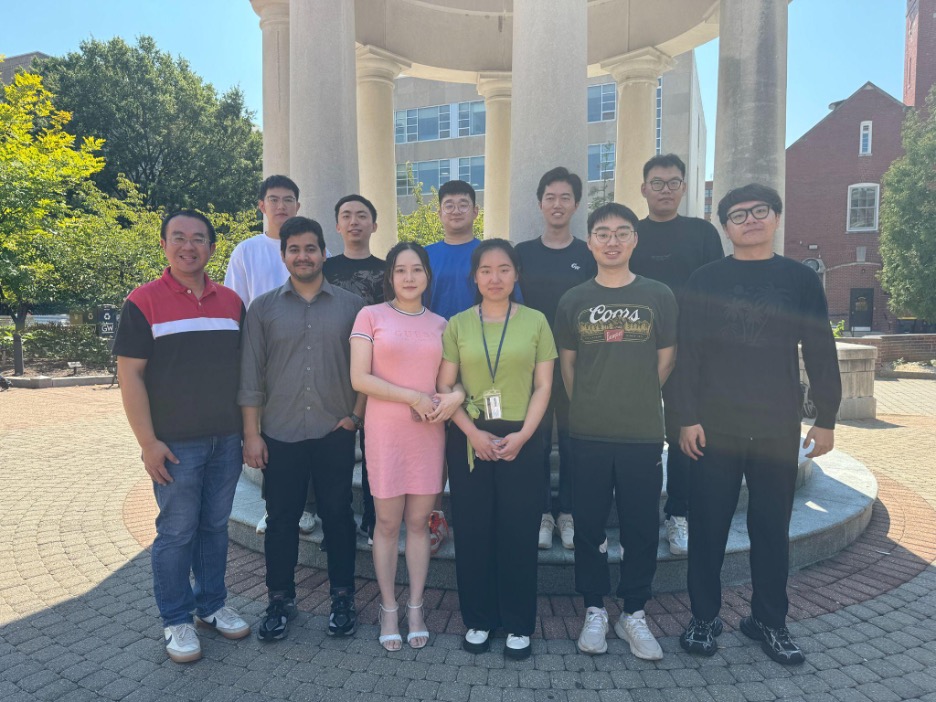Norovirus cases have reached record levels this year, with the highly contagious stomach bug spreading rapidly across the country. There are typically between 19 million and 21 million incidences of norovirus a year in the United States. Between August 2024 and February 2025, over 1600 active norovirus outbreaks were reported, over double the number of outbreaks reported during the same period last seasonal year.
Although the stomach bug may seem like a mere inconvenience, it presents a serious public health issue, causing, on average, 900 deaths and 109,000 hospitalizations annually. Understanding how viruses like norovirus are spread and disinfected is a critical public health question that Professor Danmeng Shuai and the students in his lab are answering with their latest research.
Enteric viruses like norovirus are commonly found in wastewater and can be transmitted through contaminated water sources. Solar disinfection (SODIS) is a widely adopted, low-cost, and sustainable method for treating wastewater and drinking water, especially in resource-limited settings. This technique utilizes sunlight's ultraviolet (UV) radiation and thermal effects to inactivate pathogens, including viruses, bacteria, and protozoa.

UVB light excites viruses, causing them to produce a reactive molecule called singlet oxygen, which helps deactivate them. Previously, scientists believed UVB light killed viruses through direct damage alone instead of involving singlet oxygen.
Shuai and Jiahao Chen, a Civil and Environmental Engineering Ph.D. candidate, unearthed a groundbreaking insight through their research—viruses are disinfected through an additional mechanism that had been largely overlooked.
“We call this phenomenon ‘accelerated suicidal effect’ for viruses, and it is the first observation of its kind in UVB disinfection,” Shuai explained.
“We actually discovered a new pathway for UVB disinfection in this project,” Chen emphasized.
Shuai and Chen, in collaboration with Dr. Kyle Moor and Ph.D. Candidate Monika Madhiyan from Utah State University and Dr. Hanning Chen from the University of Texas at Austin, employed an integrated approach of experimental evaluation, advanced characterization, and molecular simulation to assess the infectivity loss and disinfection mechanism for murine norovirus, a widely accepted surrogate for human norovirus, following UVB disinfection.
Shuai and Chen made another revolutionary discovery – a novel form of norovirus called vesicle-cloaked norovirus clusters that exhibit greater resistance to UVB disinfection than free noroviruses.
At the same time, Shuai and another Civil and Environmental Engineering Ph.D. student from his lab, Zhenzhen He, in collaboration with Chen, conducted related research to investigate an alternative method of disinfecting vesicle-cloaked norovirus clusters – peroxide-based disinfectants.
Peroxide-based disinfectants are increasingly used in wastewater treatment because they efficiently kill pathogens and produce fewer harmful byproducts.

In a newly-published manuscript, Shuai and He, in partnership with Dr. Xin Hu and Associate Scientist Dr. Dongxue Wang from Emory University, found that while peroxides can effectively inactivate viral vesicles, negatively charged peroxides like peracetate and peroxymonosulfate struggled to inactivate the viruses inside these vesicles.
“It’s like peeling an onion. The outside layer has been damaged and is not fresh anymore, but the inside part is still intact and infectious,” He explained.
Their findings underscore the need to consider viral vesicles as distinct entities when studying virus persistence and disinfection. “It encourages future studies to explore more comprehensive disinfection strategies, such as combining oxidants with surfactants to break vesicles before inactivating the enclosed viruses,” He concluded.
These critical research projects from Shuai and his students will inform the design of more effective strategies to prevent the release of infectious viruses into the environment, ultimately reducing the risk of waterborne disease outbreaks and bolstering public health.


